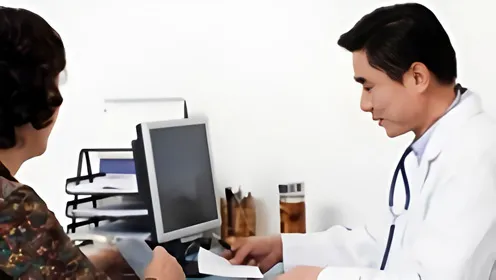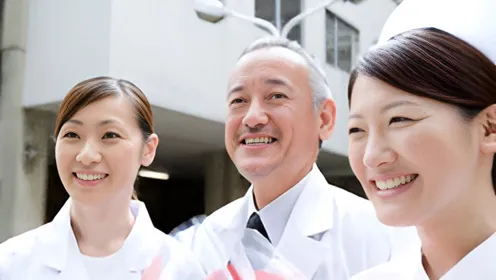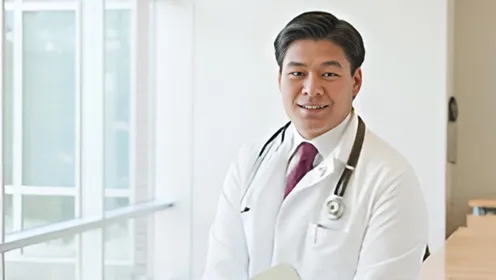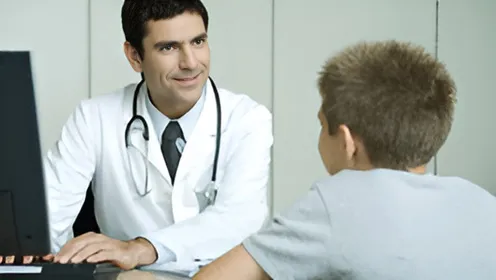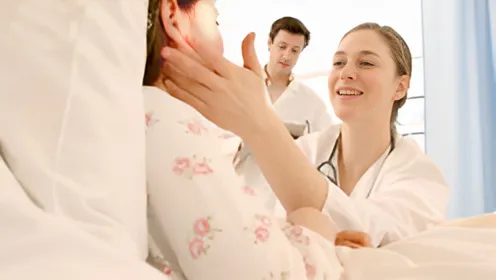What Are Hemorrhoids?
IntroductionPictures: Hemorrhoids and Anal Fissure
What Are Hemorrhoids?
What Are the Symptoms of Hemorrhoids?
How Common Are Hemorrhoids?
How Are Hemorrhoids Diagnosed?
What Is the Treatment?
How Are Hemorrhoids Prevented?
Introduction
Hemorrhoids bother about 89% of all Americans at some time in their lives. Hemorrhoids caused Napoleon to sit side-saddle, sent President Jimmy Carter to the operating room, and benched baseball star George Brett during the 1980 World Series. Over two thirds of all healthy people reporting for physical examinations have hemorrhoids. Hemorrhoids are cushions of tissue and varicose veins located in and around the rectal area. When they become inflamed, hemorrhoids can itch, bleed, and cause pain. Unfortunately a hemorrhoidal condition only tends to get worse over the years, NEVER better. That is why we advocate safe, gentle, and effective treatment for hemorrhoids, as soon as they occur.
Pictures: Hemorrhoids and Anal Fissure
Internal hemorrhoids occur higher up in the anal canal, out of sight. Bleeding is the most common symptom of internal hemorrhoids, and often the only one in mild cases.

External hemorrhoids are visible-occurring out side the anus. They are basically skin-covered veins that have ballooned and appear blue. Usually they appear without any symptoms. When inflamed, however, they become red and tender.

Sometimes, internal hemorrhoids will come through the anal opening when straining to move your bowels. This is called a prolapsed internal hemorrhoid; it is often difficult to ease back into the rectum, and is usually quite painful.

When a blood clot forms inside an external hemorrhoid, it often causes Severe pain. This thrombosed external hemorrhoid can be felt as a firm, tender mass in the anal area, about the size of a pea.

Anal fissure. A thin slit-like tear in the anal tissue, an anal fissure is likely to cause itching, pain, and bleeding during a bowel movement. For more detailed information.
The term hemorrhoids refers to a condition in which the veins around the anus or lower rectum are swollen and inflamed. Hemorrhoids may result from straining to move stool. Other contributing factors include pregnancy, aging, chronic constipation or diarrhea, and anal intercourse. Hemorrhoids are both inside and above the anus (internal) or under the skin around the anus (external). Hemorrhoids (piles) arise from congestion of internal and/or external venous plexuses around the anal canal. For more detailed about information, about the concepts of hemorrhoidal anatomy, and how the hemorrhoidal problem develops, view our video on Overview: Anatomy of Prolapse and Hemorrhoids.
Hemorrhoids are classified into four degrees, depending on severity, so that they can more easily be evaluated for possible surgery. For more detailed information, view our page Surgical Classification of Hemorrhoids.
What Are the Symptoms of Hemorrhoids?Many anorectal problems, including fissures, fistulae, abscesses, or irritation and itching (pruritus ani), have similar symptoms and are incorrectly referred to as hemorrhoids. Hemorrhoids usually are not dangerous or life threatening. Rarely, a patient can have bleeding so severe, that severe anemia or death may occur. In some cases, hemorrhoidal symptoms simply go away within a few days. But in most cases, hemorrhoidal symptoms eventually return, often worse than they were before. Although many people have hemorrhoids, not all experience symptoms. The most common symptom of internal hemorrhoids is bright red blood covering the stool, on toilet paper, or in the toilet bowl. However, an internal hemorrhoid may protrude through the anus outside the body, becoming irritated and painful. This is known as a protruding hemorrhoid. Symptoms of external hemorrhoids may include painful swelling or a hard lump around the anus that results when a blood clot forms. This condition is known as a thrombosed external hemorrhoid. In addition, excessive straining, rubbing, or cleaning around the anus may cause irritation with bleeding and/or itching, which may produce a vicious cycle of symptoms. Draining mucus may also cause itching.
How Common Are Hemorrhoids?Hemorrhoids are very common in both men and women. About half of the population have hemorrhoids by age 50. Hemorrhoids are also common among pregnant women. The pressure of the fetus in the abdomen, as well as hormonal changes, cause the hemorrhoidal vessels to enlarge. These vessels are also placed under severe pressure during childbirth. For most women, however, hemorrhoids caused by pregnancy are a temporary problem.
How Are Hemorrhoids Diagnosed?A thorough evaluation and proper diagnosis by the doctor is important any time bleeding from the rectum or blood in the stool occurs. Bleeding may also be a symptom of other digestive diseases, including colorectal cancer. The doctor will examine the anus and rectum to look for swollen blood vessels that indicate hemorrhoids and will also perform a digital rectal exam with a gloved, lubricated finger to feel for abnormalities. Closer evaluation of the rectum for hemorrhoids requires an exam with an anoscope, a hollow, lighted tube useful for viewing internal hemorrhoids, or a proctoscope, useful for more completely examining the entire rectum. To rule out other causes of gastrointestinal bleeding, the doctor may examine the rectum and lower colon (sigmoid) with sigmoidoscopy or the entire colon with colonoscopy. Sigmoidoscopy and colonoscopy are diagnostic procedures that also involve the use of lighted, flexible tubes inserted through the rectum.
What Is the Treatment?Medical treatment of hemorrhoids is aimed initially at relieving symptoms. Measures to reduce symptoms include · Warm tub baths several times a day in plain, warm water for about 10 minutes. · Application of a hemorrhoidal cream or suppository to the affected area for a limited time. Preventing of the recurrence of hemorrhoids will require relieving the pressure and straining of constipation. Doctors will often recommend increasing fiber and fluids in the diet. Eating the right amount of fiber and drinking six to eight glasses of fluid (not alcohol) result in softer, bulkier stools. A softer stool makes emptying the bowels easier and lessens the pressure on hemorrhoids caused by straining. Eliminating straining also helps prevent the hemorrhoids from protruding. Good sources of fiber are fruits, vegetables, and whole grains. In addition, doctors may suggest a bulk stool softener or a fiber supplement such as psyllium or methylcellulose. In some cases, hemorrhoids must be treated endoscopically or surgically. These methods are used to shrink and destroy the hemorrhoidal tissue. The doctor will perform the procedure during an office or hospital visit. A number of methods may be used to remove or reduce the size of hemorrhoids. Painless non-surgical techniques, lasers for hemorrhoids, harmonic scalpel for hemorrhoids, and the use of hemorrhoid medications are discussed further in this web site.
How Are Hemorrhoids Prevented?The best way to prevent hemorrhoids is to keep stools soft so they pass easily, thus decreasing pressure, and to empty bowels without undue straining as soon as possible after the urge occurs. Exercise, including walking, and eating a high fiber diet, help reduce constipation and straining by producing stools that are softer and easier to pass.



